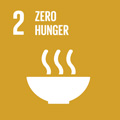- Docente: Giorgio Aicardi
- Credits: 4
- SSD: BIO/09
- Language: English
- Teaching Mode: In-person learning (entirely or partially)
- Campus: Rimini
- Corso: Second cycle degree programme (LM) in Wellness, Sport and Health (cod. 5813)
Learning outcomes
At the end of this course the student acquires knowledges about: - the physiological basis of aging and longevity; - the functional transformations occurring during the process of ageing of the nervous, endocrine, reproductive, immune, muscle-skeletal, respiratory, cardiovascular, urinary, gastrointestinal and integumentary systems; - the factors that may lead to slowing down the process of ageing, enhancing the quality of life, and promoting longevity
Course contents
Physiological basis of aging and longevity.
Elements of human physiology and functional transformations occurring during the process of ageing in the nervous, endocrine, reproductive, immune, muscular, skeletal, respiratory, cardiovascular, urinary, gastrointestinal and integumentary systems.
Physiological mechanisms underlying the factors that may slow down the process of aging, enhance the quality of life and promote longevity: nutrition, physical activity, cognitive functions and social interactions.
Readings/Bibliography
- Biology of aging, second edition, Roger B. McDonald. Garland Science, 2019.
- Anatomy & Physiology, J. Gordon Betts et al.. OpenStax, Rice University (Houston, Texas, U.S.A.), 2017. Can be downloaded for free at https://openstax.org/details/books/anatomy-and-physiology.
- Articles and other materials provided in the classroom.
Teaching methods
Theoretical lessons
Assessment methods
Oral exam.
I recommend taking the "Biology of Longevity and Healthy Lifestyles" exam before the "Physiology of Aging and Longevity" exam. However, it is not mandatory to take the two exams in this sequence.
Teaching tools
Projector and pc
Office hours
See the website of Giorgio Aicardi
SDGs



This teaching activity contributes to the achievement of the Sustainable Development Goals of the UN 2030 Agenda.
